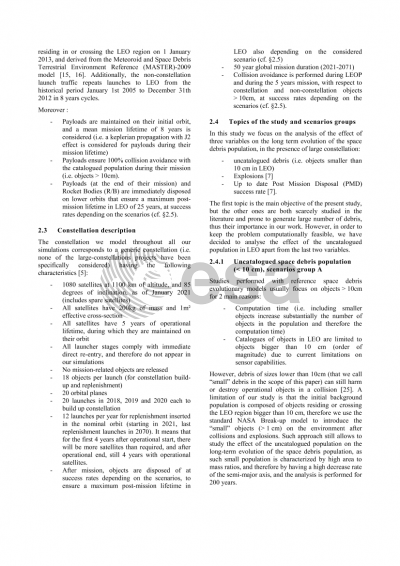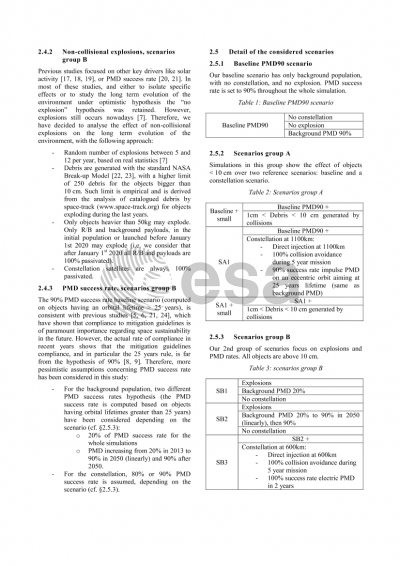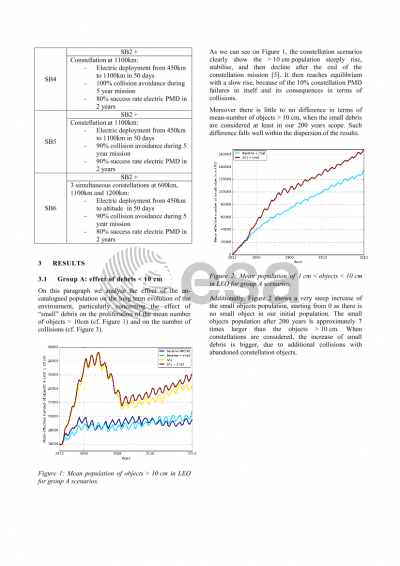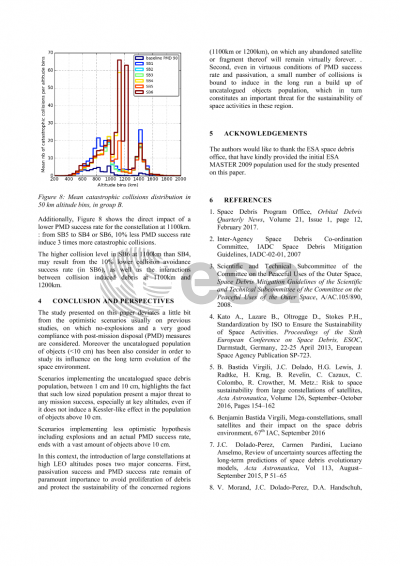Document details

Abstract
With the increase on the number of artificial objects in orbit, the threat to space sustainability continues to rise. In response, space agencies and research groups have studied the mechanisms behind the long term evolution of the space debris population since the late 1970’s [ref 1]. Such studies have resulted on guidelines, standards and laws [ref 2] aiming to mitigate the long term growth of the space debris population, and therefore to guarantee the long term sustainability of space activities.
With the advent of constellations of satellites in low Earth orbit (LEO) to provide ubiquitous internet access, the enhancement to space traffic goes beyond what was anticipated by previous studies. Therefore, such constellation represents a potential source of disruption to the long term sustainability of the space environment. Previous studies [ref 3], considering objects of size higher than 10cm, have analyzed the effect of such internet constellations on the long term evolution of the space debris population. One of the main conclusions of these studies is that a high post-mission disposal success rate is of paramount importance in order to limit the growth of the space debris population over the long term.
On this new study we consider uncatalogued objects, higher than 1cm, in our evolution model. Indeed, due to orbital velocities, a collision with an object of few millimeters can be at the origin of the loss of a satellite. Therefore, with this new analysis we want to study the effect of this population on the long term evolution of the space debris environment, and this in the presence of a large constellation. Consequently on this paper we will present a detailed analysis (e.g. number of collisions, type (i.e. catastrophic and not catastrophic …) of the effects of the small sized debris population on the long term evolution of the space debris population.
Ref 1: D.J. Kessler, B.G.Cour-Palais, Collision frequency of artificial satellites: the creation of a debris belt, JGR83(1978)2637–2646.
Ref 2a: Inter-Agency Space Debris Coordination Committee, IADC Space Debris Mitigation Guidelines. IADC-02-01. 2002.
Ref 2b: United Nations, Broadband Commission for Cultural Development, The state of Broadband 2015, September 2015.
Ref 2c: C. LeFèvre, H.Fraysse, V.Morand, A.Lamy, C.Cazaux, P.Mercier, C. Dental, F.Deleflie, D.A.Handschuh, Compliance of disposal orbits with the French space operations act : the good practices and the STELA Tool, Acta Astronautica. 94(Issue1)(2014)234–245.
Ref 3: B. Bastida Virgili, J.C. Dolado, H.G. Lewis, J. Radtke, H. Krag, B. Revelin, C. Cazaux, C. Colombo, R. Crowther, M. Metz, Risk to Space Sustainability from Large Constellations of Satellites, Acta Astronautica, 126(2016), p154-162
Preview









